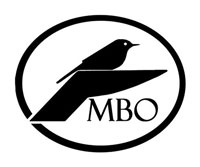McGill Bird Observatory (MBO) is a bird migration monitoring station in Ste-Anne-de-Bellevue, Quebec, operated largely by volunteers. It was established in 2004 as a partnership between the Migration Research Foundation and graduate students in the Natural Resource Sciences department at McGill University. MBO is now a member station of the Canadian Migration Monitoring Network.
Every day during spring and fall, up to six volunteers gather at the observatory 30 minutes before sunrise to monitor bird migration through banding and observation for six hours. Birds are caught using specialized nets, which are visited frequently during the morning. After a bird is extracted from the net, it is brought back to the banding station where the bander-in-charge will first identify it, then put an appropriate size band on its tarsus. The bird is then aged, sexed, its wing chord is measured, its fat level is taken and it is finally weighed just before release.
Since its inception in 2004, MBO has banded 69,660 birds of 122 species. All in all, it’s more than 1.5 million birds of 215 species that have been observed; tremendous numbers for an inland site. The collection of data through migration monitoring stations has proven to be a practical and effective way of tracking changes in bird populations, especially the species that breed in the vast and hard-to-reach boreal forest.
One aspect of this standardized protocol is that we must keep the habitat stable throughout the years in order to be able to compare our data. The vegetation maintenance on our 22-hectare site is done by one retired volunteer, Malcolm Johnson. He spends over 700 hours every year, doing everything from mowing our grass to trimming down our bushes. Before every migration season, the net lanes we use for our mist nets need to be pruned. To accomplish that task, he was previously using a stepladder and a pair of clippers to cut the hawthorn and buckthorn branches that are overhanging in the lane. Thanks to a donation from STIHL Canada, Malcolm will now be working with a KM 56 RC-E KombiEngine with the HT-KM pole pruner tool. This equipment will allow Malcolm to work efficiently from the ground and be able to cut our lanes without too much risk.

by Simon Duval
Coordinator, McGill Bird Observatory
www.oommbo.org

